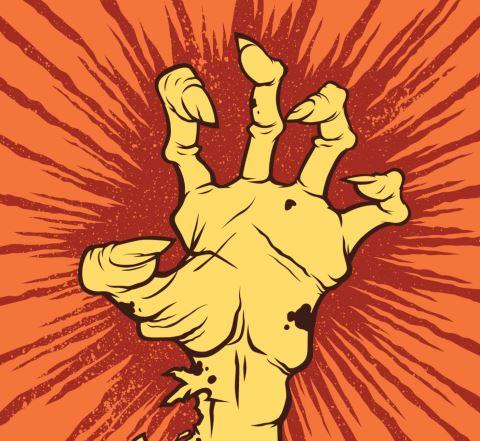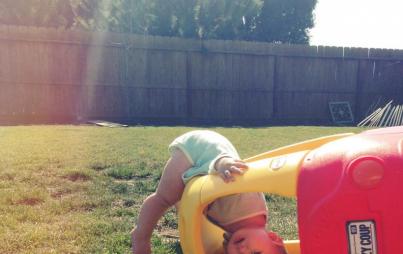
Images: ThinkStock
It may sound like delectable science fiction or a harrowing nightmare (depending on your mood) but Alcor is in the business of resurrecting the dead.
But this is neither voodoo nor witchcraft, a deal with the devil or a neo-messianic delusion—this is cryonics, the induced "suspended animation" of a corpse. The dream is to perfectly preserve a just-dead body in order to revive it in the future when medicine has taken the necessary leaps, bounds and discoveries. Which it will. The question is whether or not said medicine will be able to address the vision Alcor is after.
The story goes that in 1972, Max More, president and CEO of Alcor, started hanging out with friends and, as people are wont to do, holding meetings about futurism. More says that one glance at Cryonics Magazine was all he needed. "It just made sense to me right away.”
What began as a book—The Prospect of Immortality—written in 1964 by Robert Ettinger (a physics teacher) has since evolved into a full-blown nonprofit formally named the Alcor Life Extension Foundation. While the website insists that cryonics is neither a mortuary practice nor a reversal of death, every one of their clients is legally dead before the process can go underway.
Currently more than 984 people are signed up with Alcor to be preserved when they die, paying a a yearly membership of $770. When death comes a knockin', preservation of just your brain costs about $80,000; preserving your entire body costs up to a cool $200,000. The steep price tag enables not just top-of-the-line freezing, but ensures that the patient-care trust fund stays flush enough to keep the facilities running and the bodies preserved for decades to come.
More maintains that those who don't believe that cryonics can be successful are overlooking a lengthy history of medical advancement and the ever-shifting nature of reality, perception and truth.
"We see it as an extension of emergency medicine. We’re just taking over when today’s medicine gives up on a patient. Think of it this way: 50 years ago if you were walking along the street and someone keeled over in front of you and stopped breathing you would have checked them out and said they were dead and disposed of them. Today we don’t do that, instead we do CPR and all kinds of things. People we thought were dead 50 years ago we now know were not. Cryonics is the same thing, we just have to stop them from getting worse and let a more advanced technology in the future fix that problem." — More to the BBC
The Grisly Details
Alcor operates in a fleeting window when the heart stops and the brain dies "by conventional criteria," enabling the team to "artificially restore blood circulation and preserve brain viability even though a patient is legally deceased." Patients that are terminally ill are encouraged to set up shop in "cooperative" hospice care facilities in Scottsdale, Arizona, so the standby team is poised and ready. Once the person is pronounced dead these steps commence:
- The patient is packed in an ice water bath as blood circulation and breathing are restored using a heart-lung resuscitator. (Happily, because everyone subjected to Alcor's preservation tactics are dead, the team doesn't have to follow "approved" methods of conventional medicine.)
- The body is then flooded intravenously with a host of drugs to maintain blood pressure, preserve cells from deterioration and protect the brain from "reperfusion," when blood floods back to tissue previously deprived of oxygen.
- After the patient's body temperature is lowered to a few degrees above the freezing point of water, all the blood is replaced with a kind of glorified anti-freeze, which involves some open-chest surgery to access all the major arteries and whatnot. Instead of the tissues freezing, however, they are forced to vitrify, which basically means that any water remaining in the cells is prevented from crystallizing; the molecules are locked in place but not frozen.
- Meanwhile, two holes have been drilled in the patient's skull to closely monitor the brain's activity and reaction to the cryoprotectant solution.
- The patient is then further cooled over the next two weeks, resulting in a human-sized popsicle at -196 degrees, and then stored in vats of liquid nitrogen.
Alcor insists that life and death are not a binary; the question of being alive or dead is a much greyer area, and there is no such thing as an "on or off" switch when it comes to cells, tissues or organs.
But not everyone thinks this process is a viable option.
Cryonics Vs. Cryogenics
 Judith Shulevitz of The New Republic is one decided naysayer.
Judith Shulevitz of The New Republic is one decided naysayer.
"People who buy and sell cryonic services traffic in magical thinking, not science. In all probability, cryonically pickled brains have already turned to mush."
Cryogenics—the preservation of the living—is something she can get behind, however.
Over at the Pittsburgh Medical Center, emergency-room physicians are just as interested in cheating death, but they play their trick just as someone is about to die. Those suffering from gunshot or knife wounds are purged of their blood and pumped full of icy saltwater that plunges their body temperature to 50 degrees; the idea is to "flash-freeze" the patients in the hopes of keeping them alive.
Lance Becker, a hypothermia researcher at UPENN, echoes much of More's attitudes about the slippery nature of what it means to be dead.
“If you imagine that there is life, and then a borderline, and then there’s death, I think that what we’re going to learn is that there is now a space in between."
The accidental coupling of hypoxia (limiting oxygen except for the tiniest flow) and hypothermia has yielded encouraging results in humans and animals, inducing a kind of frigid hibernation that is entirely reversable. So far, Shulevitz argues, no mammal has undergone a planned hibernation, but the notion is that we might be able to emulate the deceleration of metabolism like bats or bears.
Legal And Ethical Issues Abound
Lurking beneath all of this—cryogenics and cryonics alike—is of course the presiding legal and ethical ramifications. Currently, a person is considered dead when there is no longer discernible activity in the brain stem, but it remains rather vague as to how to determine, and when, a brain is permanently terminated . . . or is simply suspended and momentarily dormant.
There's also the issue of pinpointing the moment of death. The law currently regards you as dead when doctors can find no activity in the brain stem, but it is vague about how and when to determine that the brain is permanently inoperative or merely dormant.
Many scientists (along with Shulevitz) believe that instead of hoping for a future medical miracle, we should strive to recreate processes that work in the here and now.
"Hibernation is an adaptation to adverse conditions, which means that there must be genes for it. Since we share 98 percent of our genes with lemurs, some researchers suspect we have some of the right ones; we just have to figure out how to switch them on. Understanding the molecular changes underlying hibernation may do more than inch us toward immortality; it could further the science of resuscitation in the here and now."
Sadly, despite moral and logistic skepticism surrounding the freezing of the dead in the hopes of future resurrection, freezing the living (who aren't about to die from traumatic injury) won't fly either, because it's currently considered assisted suicide.
People do the oddest things with their money.






